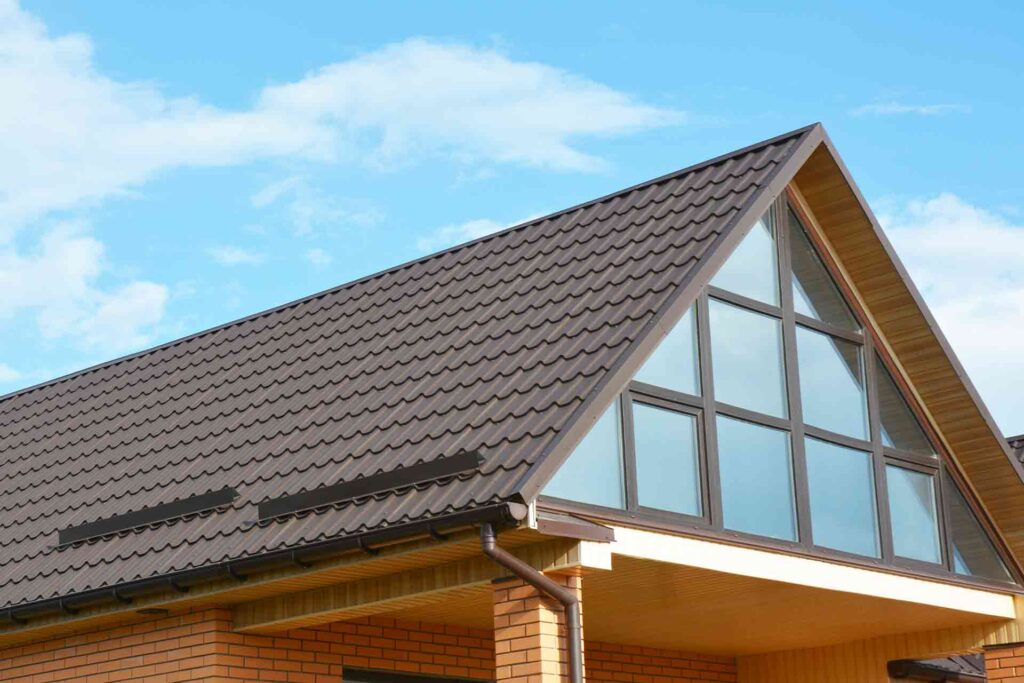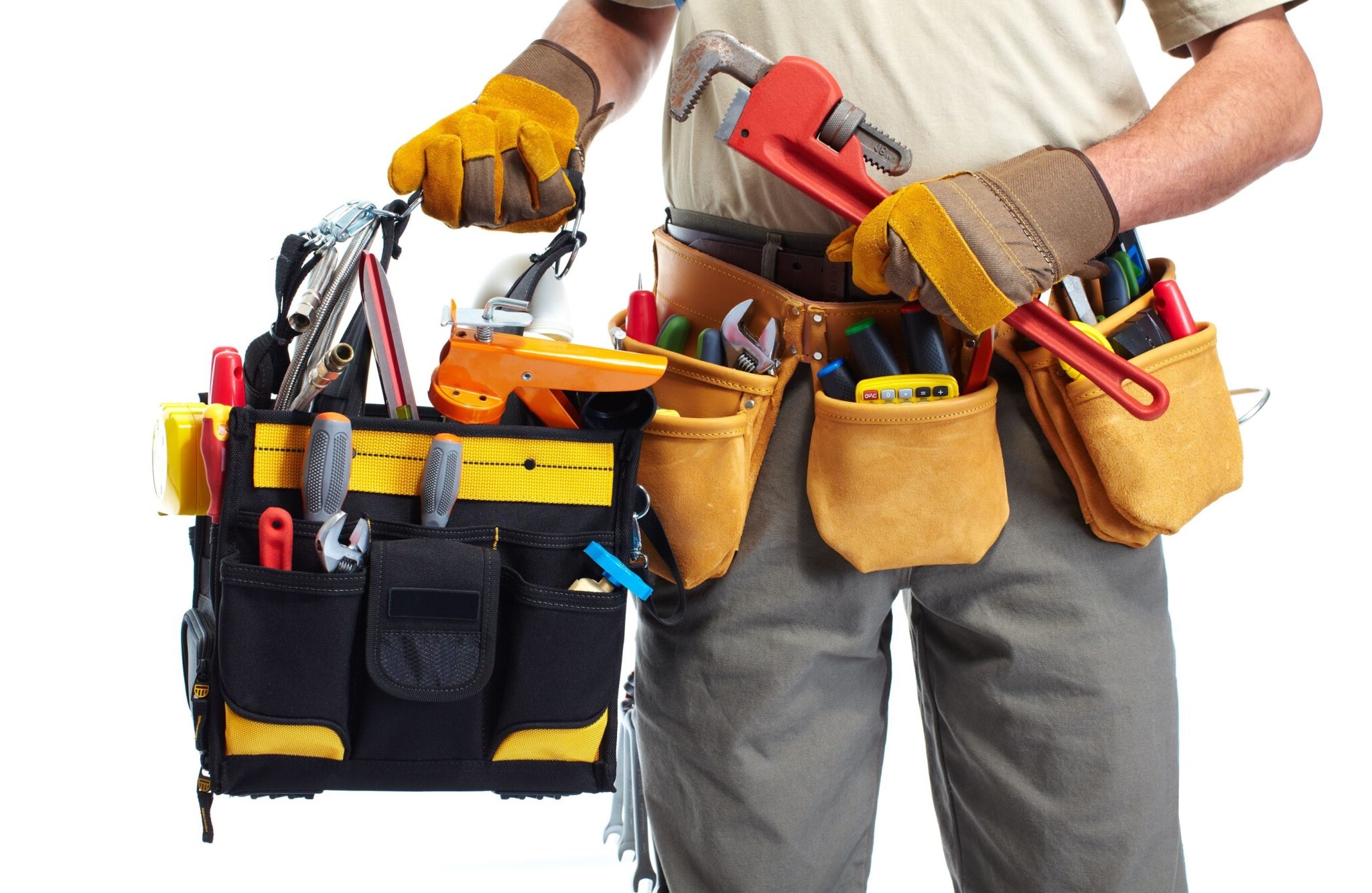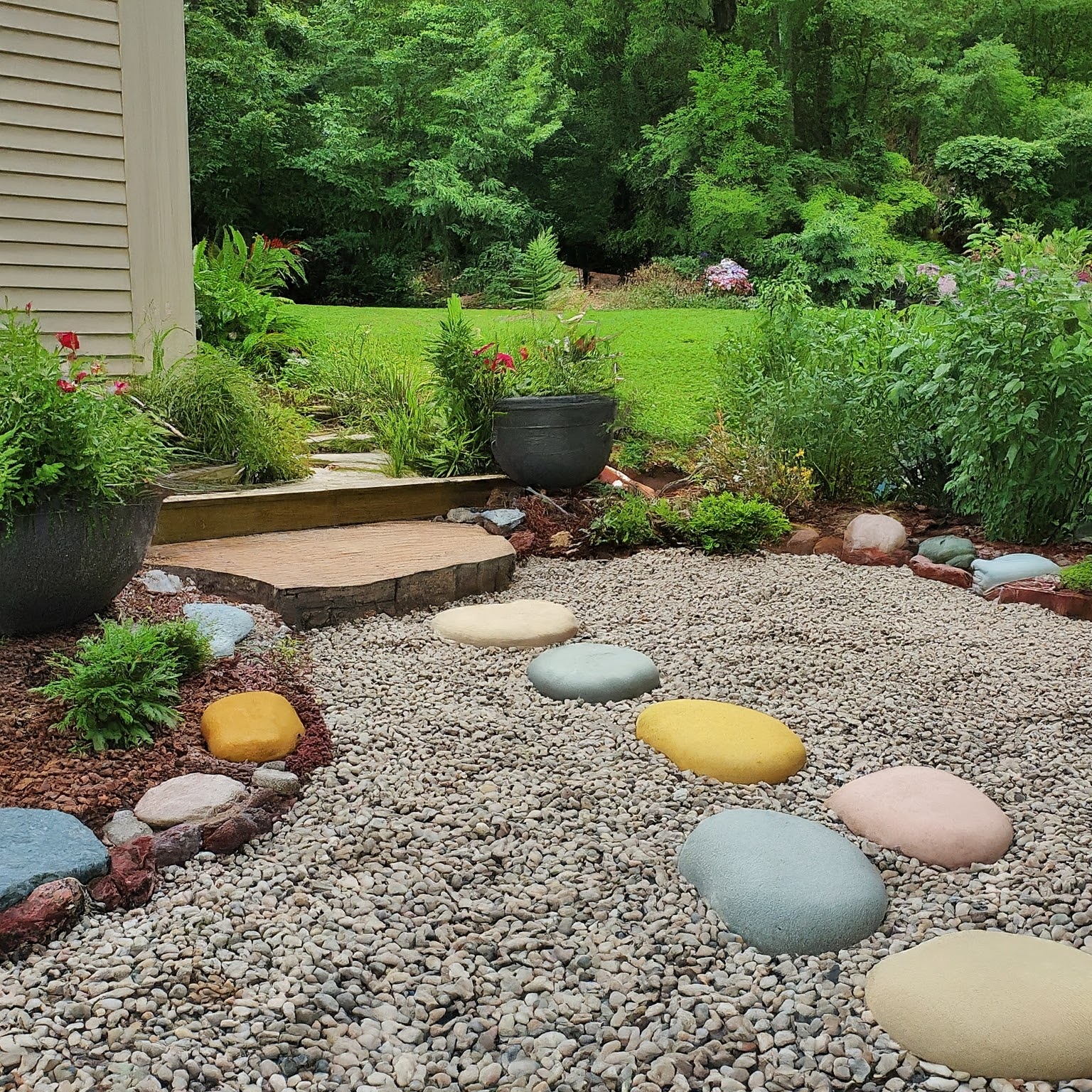
We will provide you a thorough rundown of pitched roofs in this educational blog post, examining their various varieties, key components, advantages, and drawbacks. After reading this comprehensive book, you’ll have a deeper understanding of architectural structures and the workings of pitched roofs!
Overview
Any roof having an angle of inclination more than 10° with respect to the horizontal is considered pitched. Pitched roofs can be slanted in only one direction or have a slope on all sides. The slope’s angle rises in direct proportion to variations in wind, precipitation, and snowfall. Still, the slope shouldn’t be more than sixty degrees. Precast concrete, RCC, structural steel, and wood are the materials used to build a pitched roof. Only pitched roofs are utilized in hilly regions and in places that experience strong winds, heavy precipitation, and snowfall. Large-span buildings like factories, warehouses, and workshops are also covered with it.
This page on pitched roofs covers its varied varieties, parts, and benefits and drawbacks. Your preparation for the forthcoming SSC JE Civil, GATE, and RRB JE Civil exams would be enhanced by reading this article.
Also Read: Strengths and Weaknesses of Eco-Friendly Roofing Contractors: Keeping Your Home High and Dry
Pitched Roof: What Is It?
A pitched roof is any kind of roof that includes one or more sloping sections that slope downhill from a central ridge or one edge to another. These surfaces often have an inclination greater than 20 degrees. The steepness of the roof is indicated by its pitch, which is calculated by dividing its vertical rise by its horizontal span. Pitched roofs are distinguished by their significant slope and are intended to cover building structures.
Pitched Roof
Meaning of a Pitched Roof: A pitched roof is a bi-fold, bi-planer roof including a ridge above. More precisely, a pitched roof must have a pitch more than 10° or have two slopes that meet at a central ridge. A pitched roof appears more conventional. For the best protection in cold and rainy conditions, they continue to be the most popular and practical option. Pitched roofs are frequently seen in theaters and auditoriums, factories and workshops, warehouses and godowns, and hilly locations. The site’s climate, the kind of covering material, the span, and other elements all affect how steep the roof is. When designing pitched roofs, all of these considerations are made. Gable roofs are another name for pitched roofs.
Meaning of a Pitched Roof
Common roofing structures with a downward slope are called pitched roofs. They are usually separated into two pieces, one continuous from edge to edge and the other at an angle from a central ridge. It is made up of one or more sloping surfaces that slope at an angle that is often greater than 20 degrees, creating a bi-fold or bi-planer shape with a ridge at the top. Pitched roofs are a common feature in both residential and commercial building because of its resilience and capacity to effectively shed water. For residential buildings, pitched roofs with slopes higher than 10 degrees are frequently selected by builders.
Pitched Roof Types
These are the several kinds of pitched roofs:
Mono-Pitched Roof
Pitch roofs come in the simplest form possible, with just one sloping surface. This means that the sloping surface is usually isolated from other roof surfaces. Usually, this kind of roof has two ends that overhang and are attached to the center ridge, like an equilateral triangle. Mono-Pitched Roof is referred to by a number of names, such as skillion roof, shed roof, lean-to roof, and pent roof. The ratio of the rise (calculated from the lowest point of the ridge) to the span (the horizontal distance the roof spans) determines the slope of a mono-pitch roof. To facilitate the installation of roof coverings or sheets, mono-pitch roofs are usually constructed with a sequence of primary ties, struts, principal rafters, and angle purlins.
The following are a few benefits of mono-pitch roofs:
- Because it is the simplest kind of pitched roof and needs less resources to construct, garages, storage rooms, and go-downs frequently employ it.
- These kinds of roofs may be built swiftly and affordably because not much design effort is needed to construct them.
- It is a terrific option for places with heavy rainfall since its slope, which is more than 45°, allows for sufficient drainage of snowfall and precipitation.
Also Read: How Long Do Roofs Last? Caring for a Long-Lasting Look
Double-Pitched Roof
The most typical type of pitched roof has two sloping surfaces, which suggests that the two sloping surfaces are oriented oppositely. Stated differently, it is a hybrid of two mono-pitch roofs. A double-pitch roof has twice the horizontal span and the same rise as a mono-pitch roof. The construction of a double-pitch roof is like that of a quadrilateral triangle. A single pair of primary ties, two sets of principal rafters, struts, and angle purlins that support the roof coverings make up this kind of roof structure.
Related News: Mall roof collapses in Minnesota due to heavy snowfall – Truth revealed
The following are some benefits of double-pitch roofing:
- These days, residential structures frequently have this kind of sloped roof. It is a very attractive and reasonably priced roofing option.
- It offers efficient drainage for homes in regions with heavy rainfall and snowfall, with a slope varying from 45° to 60°.
- This kind of roofing system has an easy-to-understand design that may be finished quickly.
Couple Pitched Roof
With the exception of the fact that a couple roof may be swiftly and affordably constructed, Couple Pitched Roof is comparable to a double-pitch roof. Prior to installing a ridge piece at the center ridge, the wall plates must first be installed on both supporting walls, which are often masonry pillars. One end of the main rafters is set on the ridge piece, while the other end is set on the wall plates. When sheeting is put over angle purlins, which are positioned above primary rafters, it is typically A.C., G.I., or Mangalore tiles. Couple-pitched roofs work well in situations where the greatest span is no more than 3.7 meters.
The following are couple roof’s benefits:
- It may be applied to residential structures with a limited gap between the pillars as well as garages and storage buildings.
- These roofs are easy to construct and lightweight.
- With the right slope, it offers a practical drainage solution for all kinds of residential buildings.
Couple Close Pitched Roof
The legs of the common rafters in this style of pitched roof are joined by a horizontal tie, which is the sole distinction between it and the couple roof. The roof tie extends from the wall plate of one pillar to the wall plate of the other. Stated otherwise, Couple Close Pitched Roof covers the whole horizontal length of the top. The tie beam keeps the common rafters from expanding out of the walls because it is fastened to their foot. Both the wall plates and the rafters are fastened with the horizontal ties.
The following are the benefits of the Couple Close Pitched Roof:
- The biggest benefit of this kind of pitched roof is that it adds extra triangular space, which may be utilized as a loft or for storage, something that is often absent from contemporary home designs.
- The plans for this kind of pitched roof are straightforward and can be completed quickly; complex designs are not necessary.
Collar Beam Pitched Roof
A couple close roof and a collar beam pitched roof are identical in that the former uses a collar tie in place of the latter, which runs horizontally between the wall plates. A horizontal structural element that is elevated from the rafters’ feet to almost the center is called a collar tie. It is located between the rafters. Collar ties must not protrude more than one-third or half the height of the roof from the wall plate. The rafters flex when there is an increase in the roof’s clear span or when significant weights are placed on them. Collar ties are used in high span applications to keep the rafter from drooping when there is heavy loading. When the clear span is between 4.4 and 5 meters, with an optimal span of 4.8 meters, this kind of pitched roof is utilized.
The following are some benefits of this kind of pitched roof:
- It stops element sagging and is structurally sound for long-span roofs.
- In this kind of pitched roof, the first-floor beam can be lifted close to the roof by making use of the empty roof spaces.
Slant Pitched Roof
A gable roof with sloping ends as opposed to vertical ones is called a hip or hipped slant pitched roof. A form of gable roof with two steeper slopes on each side is called a gambrel roof.
A few benefits of a slanted roof are:
- Extra Room: A sloping roof gives residents access to attic space, which they can utilize for storage or other uses.
- Decreased Snow Buildup: The slant roof allows snow to flow and fall through it more readily throughout the winter.
- Better Water Flow: Rainfall may be directed into the gutter system more quickly and readily with a slanting roof.
Purlin Pitched Roof
A roof’s longitudinal, horizontal purlin is a structural component. In conventional timber construction, purlins are divided into three categories: primary purlin, common purlin, and purlin plate. Purlins are also used in steel frame buildings. To shield steel purlins from the elements, Purlin Pitched Roofs can be oiled or painted.
Among the benefits of purlin roofs are:
- Using purlins offers the finest advantage of allowing one to customize the shape and appearance of their roof coverings.
- Users that choose to employ purlin roofs can give their roof a pitched, flat, or cone-shaped appearance, at their discretion.
King Posts Pitched Roof
In architectural, bridge, and aircraft design, a king post is a center vertical supporting post. A vertical component that extends from a crossbeam to the tip of a triangular truss is called a king post. Supporting the tie beam at the base of the truss, the king post joins the apex to the base of the truss. During the construction of the King Posts Pitched Roof structure, the central post is stopped before it reaches the peak of the roof truss.
Rather, the King Posts Pitched Roof is secured in place by a collar beam, a secondary beam that runs parallel to the tie beam. The crown post is the name given to the center post in this arrangement. The king post truss is used for short-span bridges and basic roof trusses. Because it has the fewest truss members, it is the most basic form of truss. One horizontal beam that acts as a ceiling joist and two rafters make up the truss.
Interesting Article: Prepare Your Roof for Winter
Pitched Roof Elements
The following describes the components of a pitched roof:
- Span: The horizontal distance between the inner faces of walls or other supports is known as the span.
- Rise: The vertical distance from the top of the ridge to the wall plate is known as the rise.
- Pitch: Pitch is the angle that a roof’s sides are inclined to make with respect to the horizontal plane.
- Ridge: A sloping roof’s ridge is its highest point.
- Hip-Hip is the ridge created when two sloping surfaces come together at an angle outside of 180 degrees.
- Eaves: The spots where a roof peeks a little past a building’s wall are known as the eaves. This portion of the roof is crucial as it needs to be completed correctly to keep animals from building nests and possible water intrusion.
- Purlins: Supported by trusses or walls, purlins are made of steel or wood. When the span is considerable, they serve to support the common rafters.
- Gable: A gable is the triangle-shaped top portion of a wall that forms the peak of a pitched roof.
- Verge: A gable’s border that extends between the ridge and the eaves is known as the verge.
- Cleats: Cleats are little wooden blocks fastened to the ceiling or rafters.
- A template is a square or rectangular block composed of concrete or stone that is placed below the end of a beam or truss in order to distribute the weight of the roof across a sizable bearing surface.
- Common Rafters: Oriented from the ridge to the eaves, common rafters are slanted wooden sections. The roof coverings are supported by these intermediate rafters.
- Hip Rafters: The sloping rafters that make up a sloped roof’s hip are called hip rafters. To support the roof coverings, they are arranged diagonally from the ridge to the corners of the walls.
- Jack Rafters: Compared to other rafter types, jack rafters are usually shorter. Usually, these rafters are positioned from the hip or valley to the eaves.
- Valley Rafters: Valley gutters are typically supported by these rafters. Valley rafters are positioned diagonally from the ridge to the eaves and naturally slope.
- Truss: A truss is a triangle-based framework that is commonly used. It is constructed and intended to support the ceilings or room coverings.
Pitched Roof Benefits/Advantages
The following are some benefits of using pitched roofs:
Defense Against Environmental Hazards
When it comes to handling severe weather, such torrential rain and snowfall, pitch roofs—which have a triangle-shaped structure—are significantly more sturdy and efficient. The pitched roof design lessens the chance of waterlogging by helping to divert water away from the dwelling.
Efficiency in terms of heat
Buildings with naturally occurring ventilation under their uppermost roof layer have far higher thermal efficiency. In the summer and winter, this offers the most comfortable interior climate.
Energy-saving
of a building’s energy loss, 25–35% of it may be attributed to the building envelope. Energy is saved via the design of pitched roofs, which permit natural airflow between the building’s outside and inside.
Durability
Certain roofing tiles are sustainable enough to include solar panels into pitched roof structures.
Greater longevity
Drainage systems on flat roofs need to be regularly maintained in order to prevent leaks. The roof’s pitch lengthens its lifespan and improves its strength and durability.
Reusing rainfall
Rainwater may be reused more easily on pitched roofs than on flat roofs. Maintenance and modification of external drainage systems are less complicated.
Flexibility
It is possible to build significant additional living space inside of pitched roofs. As a result, there is more room for habitation and storage.
The drawbacks/disadvantages of a pitched roof
The following lists a few drawbacks of pitched roofs:
- Deeper footings are required for buildings with pitched roofs because they put more weight on the foundations. Pitch roofs cannot usually be added to an existing building in place of flat roofs.
- Not practical for multi-story buildings or intricate designs.
- Pitched roof installation and upkeep can be quite costly.
Frequently Asked Questions
Q1. How is roof pitch calculated? How can I determine a roof’s pitch? What is a roof’s typical pitch?
Roof pitch is determined by dividing the vertical rise by the horizontal run, yielding a ratio such as 4:12. Alternatively, you may use the arctangent function to get the pitch angle in degrees. Residential structures often have roof pitches that range from 4:12 to 9:12. On steeper pitches, clay or slate tiles could work, while asphalt shingles work better on lower pitches. Climate, architectural style, and local building codes all have a role in the choice. Speaking with experts is essential for precise guidance based on particular project requirements and local considerations. Ultimately, there’s no one-size-fits-all guideline; rather, the selection of pitch is contingent upon the specific needs and circumstances.
Q2. A pitched roof: what is it? How is roof pitch calculated? What is the roof pitch calculation in degrees?
A pitched roof has a sloping surface as opposed to a flat or low-slope roof. A roof’s pitch, which is often expressed as an angle or ratio, tells us how steep it is. Pitch may be computed as the ratio of about 4:12 obtained by dividing the vertical ascent by the horizontal run.
Find the pitch in degrees by using the arctangent function:
Pitch Angle is equal to arctan(Vertical Rise/Horizontal Run).
Residential roof pitches typically range from 4:12 to 9:12; materials like slate should have steeper pitches, while asphalt shingles should have lower pitches. Climate, regional building codes, and architectural style are all factors in the decision-making process. Expert consultation ensures accurate evaluations for specific tasks.
Q3. What is the pitch of a roof with a 5/12 pitch? A 4/12 roof pitch: what is it? A 3/12 roof pitch: what is it? A 6/12 pitch roof: what is it?
A roof with a 5:12 pitch may have its angle calculated using the arctangent function as follows: Pitch Angle=arctan(5/12), or around 22.62 degrees. A 4:12 pitch roof has a pitch angle of approximately 18.43 degrees, whereas a 3:12 pitch roof has a pitch angle of around 14.04 degrees. This indicates that at a pitch of 6:12, the angle is approximately 26.57 degrees. The ratio of vertical rise to horizontal run is represented by these pitch values. While a 5:12 pitch is a moderate slope suitable for a range of roofing materials, a 4:12 pitch is often used in residential construction. Lower pitches, like 3:12, are friendlier; steeper pitches, like 6:12, could be suitable for materials that require greater water drainage.
Q4. On low-pitch roofs, how should roll roofing be installed? How is a pitched roof constructed? What is a metal roof’s minimum pitch?
The first stage in putting roll roofing on a low-pitch roof is to clean and prime the surface. After laying down a foundation sheet and fastening it with glue or nails, fold the subsequent sheets over. Seal joints with roofing cement. Pitch determination is the first step in building a pitched roof; rafters are then erected, sheathing is added, and roofing material is covered. Remember to flash correctly to prevent leaks. The minimum pitch of a metal roof varies depending on the kind of metal roofing employed. For standing seam metal roofs, the ideal ratio is usually 1:12, however certain systems require at least 3:12 or 4:12 to get optimal water shedding. Always follow manufacturer instructions and local building codes.
Source:
https://testbook.com/civil-engineering/pitched-roof-meaning-components-and-construction-method
-
5 Questions to Consider Before Installing Rooftop Solar
As energy costs rise and environmental concerns grow, many homeowners are considering rooftop solar panels as a sustainable and cost-effective
-
How Much Does A Handyman Charge To Paint A Room In Minnesota?
Giving your Minnesota home a fresh coat of paint can breathe new life into a space. But if you’re not
-
How Much Does a Handyman Charge Per Hour in Minnesota (Updated for 2024)
Keeping your Minnesota home in tip-top shape often requires a toolbox full of skills and sometimes, more hands than you
-
Make a Pea Gravel Patio Yourself -What Tools You May Need?
Pea gravel patios offer a charming and budget-friendly way to create an inviting outdoor space. They are perfect for patios,
-
Pea Gravel Patios: A Budget-Friendly But Practical Choice?
Pea gravel patios have become a popular choice for homeowners looking for an attractive and affordable outdoor space. Made from
-
The Curious Case of the Skibidi Toilet Song: A Viral Enigma
The internet is a breeding ground for bizarre trends, and the “Skibidi Toilet Song” is a prime example. While its









